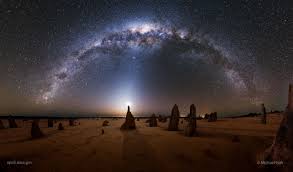Quantum Computers

L. WENG
In this note, proposed are approaches to local $p$-adic and global adelic quantum gates of future generations of quantum computers.
arXiv Post
Zeta Functions

Z.SHI and L. WENG
As a continuation of our earlier paper in this series, we offer a new approach to murmurations and Sato-Tate laws for higher rank zetas of elliptic curves. Our approach here does not depend on the Riemann hypothesis for the so-called $a$-invariant $a^{~}_{E/\mathbb F_p;n}$ in rank $n(\geq 3)$ even for the Sato-Tate law, rather, on a much refined structure, a similar of which was already observed earlier by Zagier and the senior author of this paper when the rank $n$ Riemann hypothesis was established. Namely, instead of the rank $n$ Riemann hypothesis bounds $\left|\frac{a^{~^{~}}_{E/\mathbb F_p;n}}{2\sqrt{p^n}}\right|\leq 1$ on which our first paper is based, we use the asymptotic bounds $\left| \frac{\ {a^{~^{~}}_{E/\mathbb F_p;n}}\,+(n-1)p+(n-5)\ }{(n-1)\sqrt p}\right|\leq 1$. Accordingly, rank $n$ Sato-Tate law can be established and rank $n$ murmuration can be formulated equally well, similar to the corresponding structures in the abelian framework for Artin zetas of elliptic curves.
Published by International Journal of Data Science in the Mathematical Sciences

Z.SHI and L. WENG
For elliptic curves over rationals, there are a well-known conjecture of Sato-Tate and a new computational guided murmuration phenomenon, for which the abelian Hasse-Weil zeta functions are used. In this paper, we show that both the murmurations and the Sato-Tate conjecture stand equally well for non-abelian high rank zeta functions of the $p$-reductions of elliptic curves over rationals. We establish our results by carefully examining asymptotic behaviors of the $p$-reduction invariants $a^{~}_{E/\mathbb F_q,n}\ (n\geq 1)$, the rank $n$ analogous of the rank one $a$-invariant $a^{~}_{E/\mathbb F_q}=1+q-N_{E/\mathbb F_q}$ of elliptic curve $E/\mathbb F_{q}$. Such asymptotic results are based on the counting miracle of the so-called $\alpha^{~}_{E/\mathbb F_q,n}$- and $\beta^{~}_{E/\mathbb F_q,n}$-invariants of $E/\mathbb F_q$ in rank $n$, and a remarkable recursive relation on the $\beta^{~}_{E/\mathbb F_q,n}$-invariants, both established by Weng-Zagier in one of their PNAS papers.

L. WENG
For each $(m+1)$-tuple ${\bf n}_m=(n_0,n_1,\ldots,n_m)$ of positive integers, the ${\bf n}_m$-derived zeta function $\widehat\zeta_{X,\mathbb F_q}^{\,({\bf n}_m)}(s)$ is defined for a curve $X$ over $\mathbb F_q$, motivated by the theory of rank $n$ non-abelian zeta functions $\widehat\zeta_{X,\mathbb F_q;n}(s)$ of $X/\mathbb F_q$. This derived zeta function satisfies standard zeta properties such as the rationality, the functional equation and admits only two singularities, namely, two simple poles at $s=0,1$, whose residues are given by the ${\bf n}_m$-derived beta invariant $\beta_{X,\mathbb F_q}^{\,({\bf n}_m)}$ for which the Harder-Narasimhan-Ramanan-Desale-Zagier type formula holds. In particular, similar to the Artin Zeta function, this ${\bf n}_m$-derived Zeta function for $X$ over $\mathbb F_q$ is a ratio of a degree 2g polynomial $P_{X,\mathbb F_q}^{({\bf n}_m)}$ in $T_{{\bf n}_m}=q^{-s\prod_{k=0}^mn_k}$ by $(1-T_{{\bf n}_m})(1-q_{{\bf n}_m}T_{{\bf n}_m})T_{{\bf n}_m}^{g-1}$ with $q_{{\bf n}_m}=q^{\prod_{k=0}^mn_k}$. Indeed, we have $$\begin{aligned} &\widehat \zeta_{X,\mathbb F_q}^{({\bf n}_{m})}(s)=\widehat Z_{X,\mathbb F_q}^{({\bf n}_{m})}(T_{{\bf n}_{m}})\\ =& \left(\sum_{\ell=0}^{g-2}\alpha_{X,\mathbb F_q}^{({\bf n}_{m})}(\ell)\Big(T_{{\bf n}_{m}}^{\ell-(g-1)}+q_{{\bf n}_{m}}^{(g-1)-\ell}T_{{\bf n}_{m}}^{(g-1)-\ell}\Big) +\alpha_{X,\mathbb F_q}^{({\bf n}_{m})}(g-1))\Big)\right)+\frac{(q_{{\bf n}_{m}}-1)T_{{\bf n}_{m}}\beta_{X,\mathbb F_q}^{({\bf n}_{m})}}{(1-T_{{\bf n}_{m}})(1-q_{{\bf n}_{m}}T_{{\bf n}_{m}})}\\ \end{aligned}$$ for some ${\bf n}_m$-derived alpha invariants $\Big\{\alpha_{X,\mathbb F_q}^{({\bf n}_{m})}(\ell)\Big\}_{\ell=0}^{g-1}$ of $X/\mathbb F_q$. Furthermore, when $X$ restricts to an elliptic curve, or when ${\bf n}_m=(2,2,\ldots 2)$, established is the ${\bf n}_m$-derived Riemann hypothesis claiming that all zeros of $\widehat \zeta_{X,\mathbb F_q}^{({\bf n}_{m})}(s)$ lie on the central line $\Re(s)=\frac{1}{2}$. In addition, formulated is the Positivity Conjecture claiming that the above ${\bf n}_m$-derived alpha and beta invariants are all strictly positive. This Positivity Conjecture is the key to control our ${\bf n}_m$-derived zetas. .

L. WENG
In this paper, we develop some basic techniques towards the Riemann hypothesis for higher rank non-abelian zeta functions of a regular projective curve of genus $g$ over a finite field $\mathbb F_q$. In particular, as an application of the Riemann hypothesis for rank $n$ zeta functions, we obtain some explicit bounds on the fundamental non-abelian $\alpha$- and $\beta$-invariants of $X/\mathbb F_q$ in terms of $X$ and $n,\, q$ and $g$: $$\alpha^{~}_{X/{\mathbb F}_q;n}\,(mn)=\sum_{V}\frac{q^{h^0(X,V)}-1}{\#{\mathrm{Aut}}(V)},\ \,\beta^{~}_{X/{\mathbb F}_q;n}\,(mn):=\sum_{V}\frac{1}{\#{\mathrm{Aut}}(V)}\ \,(m< g)$$ where $V$ runs through all rank $n$ semi-stable $\mathbb F_q$-rational vector bundles of degree $mn$ over $X$. Finally, we demonstrate that these bounds in lower ranks, in turn, play a central role in establishing the Riemann hypothesis for rank three zetas, following H. Yoshida's approach to rank two Riemann hypothesis.
L. WENG
Contents
Part 1. Non-Abelian Zeta Functions
Part 2. Rank Two Zeta Functions
Part 3. Eisenstein Periods and Multiple $L$ Functions
Part 4. Zeta Functions for Reductive Groups
Part 5. Algebraic, Analytic Structures and the Riemann Hypothesis
Part 6. Geometric Structures and the Riemann Hypothesis
Part 7. Five Essays on Arithmetic Cohomology (with K. Sugahara)

Proc. Natl. Acad. Sci. USA 117 (2020), no.9, 4546-4558
L. WENG and D. Zagier

Proc. Natl. Acad. Sci. USA 117 (2020), no.12, 6279-6281
L. WENG and D. Zagier

Lin WENG
To be appeared as Chapter 13 of Part 5 in the above book Zeta Functions of Reductive Groups and Their Zeros

Lin WENG
To be appeared as Chapter 18 of Part 6 in the above book Zeta Functions of Reductive Groups and Their Zeros
In memory of Gang XIAO.

L. WENG
Over the moduli space of rank $n$ semi-stable lattices is a universal family of tori. Along the fibers, there are natural differential operators and differential equations, particularly, the heat equations and the Fokker-Planck equations in statistical mechanics. In this paper, we explain why, by taking averages over the moduli spaces, all these are connected with the zeros of rank $n$ non-abelian zeta functions of the field of rationals, which are known lie on the central line except a finitely many if $n\geq 2$. Certainly, when $n=1$, our current work recovers that of Armitage, which from the beginning motivates ours. However, we reverse the order of the results and the hypothesis in their works, i.e. we construct averaged versions of Fokker-Planck equations using the above structure of non-abelian zeta zeros. This then leads to an infinite dimensional Hilbert vector bundle with smooth sections parametrized by non- abelian zeta zeros. We conjectures that the above structure of Fokker-Planck equation comes naturally from an 'essential projectively flat connection' of the infinite dimensional Hilbert bundle and the above family of smooth sections are its 'essential pro-flat sections'.

Lin WENG
Arithmetic Cohomology Theory

K. Sugahara and L. WENG
About 50 years ago, Tate developed a theory of residues for curves using traces and adelic cohomologies. In 1989, Tate's work was integrated with the $K_2$ central extensions by Arbarello-De Concini-Kac. Later, in 2003, Osipov, based on Kapranov's dimension theory, constructed dimension two central extensions and hence established the reciprocity law for algebraic surfaces using Parshin's adelic theory. In essence, Osipov's construction may be viewed as $K_2$ type theory of central extensions developed by Brylinski-Deligne. However, for arithmetic surfaces, $K_2$ theory does not work. Instead, we first develop a new theory of central extensions based on Arakelov theory, then we use our adelic cohomology theory to establish the reciprocity law for arithmetic surfaces.
Reciprocity Law version, Reciprocty Law+Central Extension version
Appeared as Appendix E in the above book Zeta Functions of Reductive Groups and Their Zeros

K. Sugahara and L. WENG
We first introduce global arithmetic cohomology groups for quasi-coherent sheaves on arithmetic varieties, adopting an adelic approach. Then, we establish fundamental properties, such as topological duality and inductive long exact sequences, for these cohomology groups on arithmetic surfaces. Finally, we expose basic structures for ind-pro topologies on adelic spaces of arithmetic surfaces. In particular, we show that these adelic spaces are topologically self-dual.
This is a revised version dated on 27 November, 2014. Newly developed is a theory of ind-pro topologies over adelic spaces for arithmetic surfaces.
Appeared as Appendices A and B in the above book Zeta Functions of Reductive Groups and Their Zeros
Codes as Refined Algebraic Geometry

Lin WENG
This paper consists of three components. In the first, we give an adelic interpretation of the classical extension class associated to extension of locally free sheaves on curves. Then, in the second, we use this construction on adelic extension classes to write down explicitly adelic representors in $GL_r(A)$ for Atiyah bundles $I_r$ on elliptic curves. All these works make sense over any base field. Finally, as an application, for $m \geq 1$, we construct the global sections of $I_r(mQ)$ in local terms and apply it to obtain MDS codes based on the non-commutative codes spaces $C_{F,r}(D; I_r(mQ))$ introduced in [Codes and Stability].
This contains the paper immediately followed. That one remains, being attractive.

Lin WENG
Algebraic geometry aspects of the code theory may be viewed as a refined thoery of algebraic geometry, since, most of the time, effective constructions of the objects involved are required. Motived by this, in this paper, we give an adelic interpretation of extension classes of locally free sheaves over curves, which may be viewed as an effective version of the classical cohomology approach for the extension classes of Grothendieck. While the discussion works over any base field, we limit our discussion over an finite field

Lin WENG
We introduce new yet easily accessible codes for elements of $GL_r({\bf A})$ with ${\bf A}$ the adelic ring of a (dimension one) function field over a finite field. They are linear codes, and coincide with classical algebraic geometry codes when $r=1$. Basic properties of these codes are presented. In particular, when offering better bounds for the associated dimensions, naturally introduced is the well-known stability condition. This condition is further used to determine the minimal distances of these codes. To end this paper, for reader's convenience, we add two appendices on some details of the adelic theory of curves and classical AG codes, respectively.
Arithmetic Hitchin Fibrations

L. WENG
For a split reductive group defined over a number field, we first introduce the notations of arithmetic torsors and arithmetic Higgs torsors. Then we construct arithmetic characteristic curves associated to arithmetic Higgs torsors, based on the Chevalley characteristic morphism and the existence of Chevalley basis for the associated Lie algebra. As to be expected, this work is motivated by the works of Beauville-Narasimhan on spectral curves and Donagi-Gaistgory on cameral curves in algebraic geometry. In the forthcoming papers, we will use arithmetic characteristic curves to construct arithmetic Hitchin fibrations and study the intersection homologies and perverse sheaves for the associated structures, following Ngo's approach to the fundamental lemma.
Intersection Homology for Moduli of Arithmetic $G$-Torsors

L. WENG
Naturally associated to a split reductive group over a number field are the (total) moduli spaces of the associated arithmetic torsors and their semi-stable companions. In this article, we formulate some conjec- tures to determine the intersection homology of the semi-stable moduli spaces in terms of the intersection homology of the reduced Borel-Serre compactifications $L^2$-cohomology of the total moduli spaces.
L. WENG
The combinatoric aspect of Arthur's trace formula depends heavily on Langlands' combinatorial lemma. In this note, we supply an easy proof of (a special form of) it.

L. WENG
Let $X=G/A_GK$, resp. $Y=\Gamma\backslash G/A_GK$, be a symmetric space, resp. a locally symmetric space, associated to a split reductive group $G/{\mathbb Q}$, its maximal compact subgroup $K$ and an arithmetic subgroup $\Gamma$. In this paper, motivated by Zucker's reductive Borel-Serre compactification $\overline Y^{\rm rBS}$ of $Y$, we construct new but genuine topological spaces $X^{\rm red}$ and $Y^{\rm red}$, together with their natural compactifications $\overline {X^{\rm red}}$ and $\overline {Y^{\rm red}}$ respectively, for the purpose to uniformly understand reductive structures involved at different parabolic levels, based on Saper's tiling theory. We show that for a regular representation $\rho:G\to {\mathrm GL}(V)$, there is a natural isomorphism \[IH^*(\overline {Y^{\rm red}},\mathbb V)\simeq IH^*(\overline Y^{\rm rBS},\mathbb V),\] where $\mathbb V$ denotes the natural associated local systems on the associated spaces induced by $\rho$. Furthermore, when $X$ is of equal rank, we show that, for the interiors $Y_0^o$ of the central tile $Y_0=\overline Y_G^{\rm red}$ of a tiling $\overline {Y^{\rm red}}=\bigsqcup_P\overline {Y_P^{\rm red}}$, and for the equal rank Satake compactification $Y^*$ of $Y$, there are natural isomorphisms $$H_{(2)}^*(Y_0^o,\overline{\mathbb V}_\rho)\simeq H_{(2)}^*(Y,\overline{\mathbb V}_\rho)\simeq IH^*(\overline Y^{\rm rBS},\mathbb V)\simeq IH^*(Y^*,\mathbb V)$$ based on Looijenga, Saper-Stone's solution to the (Borel-)Zucker conjecture and Saper's confirmation to the Rapoport/Goresky-MacPherson conjecture.